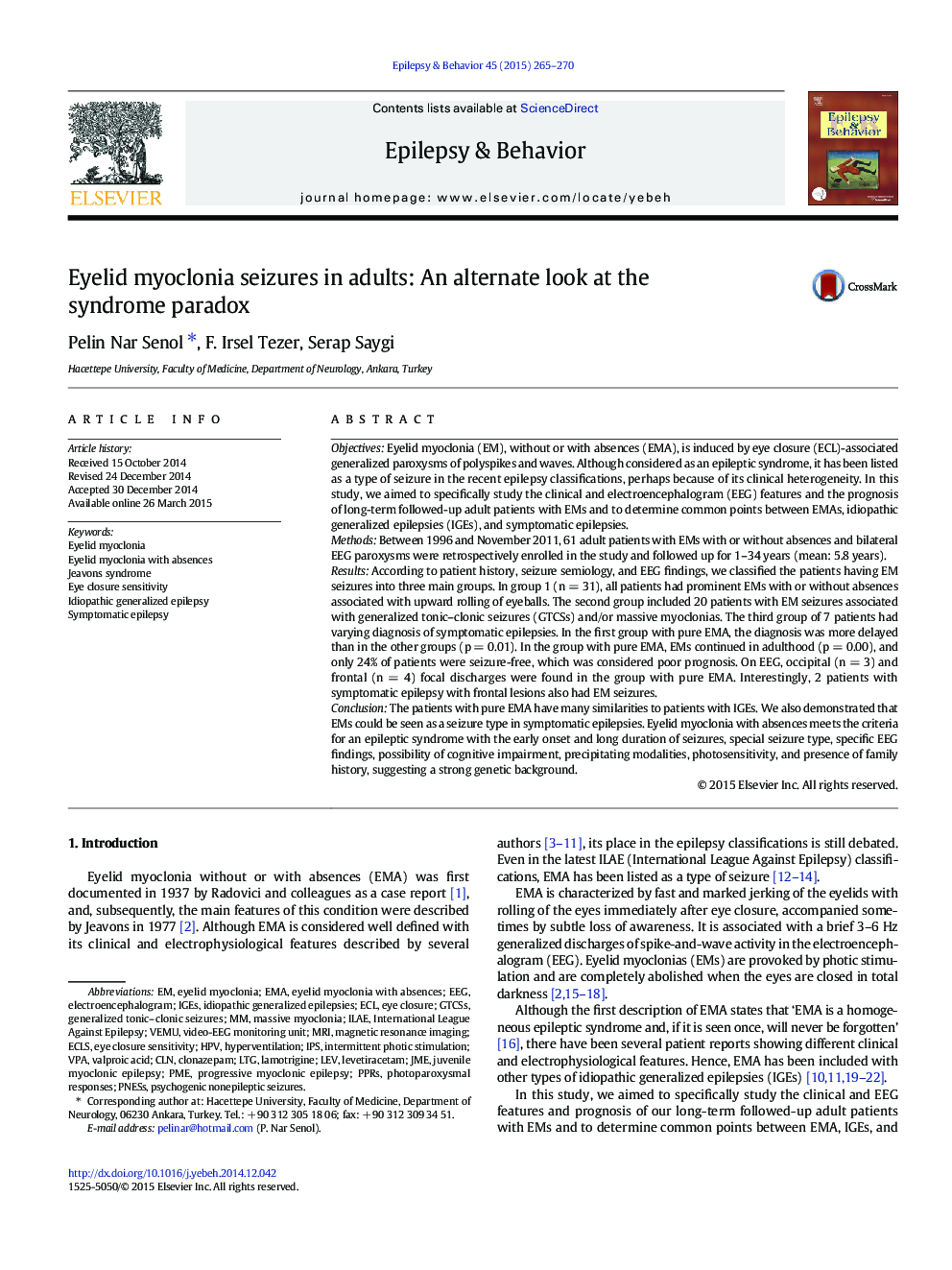| کد مقاله | کد نشریه | سال انتشار | مقاله انگلیسی | نسخه تمام متن |
|---|---|---|---|---|
| 6011311 | 1579844 | 2015 | 6 صفحه PDF | دانلود رایگان |
- We investigated the clinical and electroencephalogram features in 61 patients with EMs.
- The diagnosis of EMA is difficult and complicated in adult life.
- Patients with EM seizures and EMA have usually poor prognosis.
- EMs can be seen in symptomatic epilepsies besides IGEs.
- Eyelid myoclonia with absences meets the criteria for an epileptic syndrome.
ObjectivesEyelid myoclonia (EM), without or with absences (EMA), is induced by eye closure (ECL)-associated generalized paroxysms of polyspikes and waves. Although considered as an epileptic syndrome, it has been listed as a type of seizure in the recent epilepsy classifications, perhaps because of its clinical heterogeneity. In this study, we aimed to specifically study the clinical and electroencephalogram (EEG) features and the prognosis of long-term followed-up adult patients with EMs and to determine common points between EMAs, idiopathic generalized epilepsies (IGEs), and symptomatic epilepsies.MethodsBetween 1996 and November 2011, 61 adult patients with EMs with or without absences and bilateral EEG paroxysms were retrospectively enrolled in the study and followed up for 1-34 years (mean: 5.8 years).ResultsAccording to patient history, seizure semiology, and EEG findings, we classified the patients having EM seizures into three main groups. In group 1 (n = 31), all patients had prominent EMs with or without absences associated with upward rolling of eyeballs. The second group included 20 patients with EM seizures associated with generalized tonic-clonic seizures (GTCSs) and/or massive myoclonias. The third group of 7 patients had varying diagnosis of symptomatic epilepsies. In the first group with pure EMA, the diagnosis was more delayed than in the other groups (p = 0.01). In the group with pure EMA, EMs continued in adulthood (p = 0.00), and only 24% of patients were seizure-free, which was considered poor prognosis. On EEG, occipital (n = 3) and frontal (n = 4) focal discharges were found in the group with pure EMA. Interestingly, 2 patients with symptomatic epilepsy with frontal lesions also had EM seizures.ConclusionThe patients with pure EMA have many similarities to patients with IGEs. We also demonstrated that EMs could be seen as a seizure type in symptomatic epilepsies. Eyelid myoclonia with absences meets the criteria for an epileptic syndrome with the early onset and long duration of seizures, special seizure type, specific EEG findings, possibility of cognitive impairment, precipitating modalities, photosensitivity, and presence of family history, suggesting a strong genetic background.
Journal: Epilepsy & Behavior - Volume 45, April 2015, Pages 265-270
